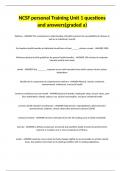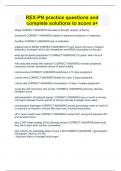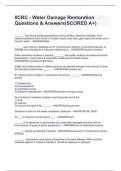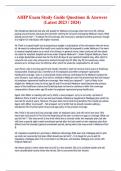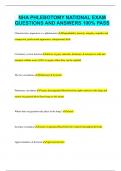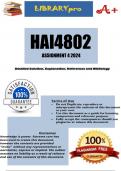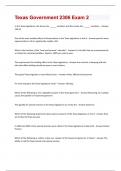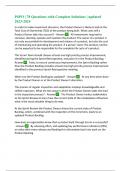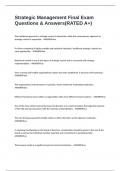Exam (elaborations)
NCSF personal Training Unit 1 questions and answers(graded a)
- Course
- Institution
Wellness - ANSWER The contemporary understanding of health examines the susceptibility for disease as well as an individual's overall: For baseline health benefits an individual should burn at least ______ calories a week. - ANSWER 1000 Minimum physical activity guidelines for general health ...
[Show more]
